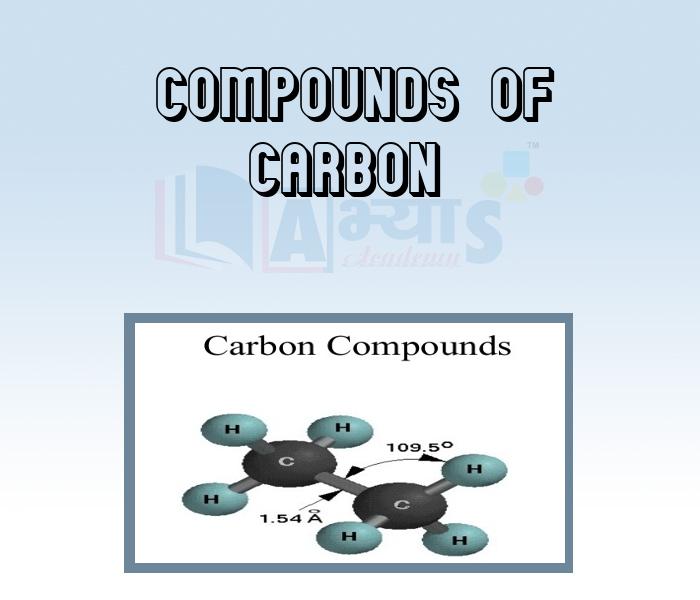Compounds Of Carbon












Compounds Of Carbon
Carbon And Its Compounds: Carbon (C) is chemical clement (atomic number 6; atomic weight 12.01115 and electronic configuration 2, 4). It is estimated that carbon makes up 0.32% of the earth's crust. Carbon is unique in chemistry because it forms a vast number of compounds, larger than the sum total of all other elements combined. By far the largest group of these compounds is those composed of carbon and hydrogen. It has been estimated that there are at least 1,000,000 known organic compounds, and this number is increasing rapidly every year.
Compound Of Carbon:
Carbon dioxide is a colourless, odourless and tasteless gas (formula and about 1.5 times as heavy as air). Under normal conditions, it is stable, inert, and non-toxic. The decay (slow oxidation) of an organic materials produces CO2. Fresh air contains approximately o.03% CO. by volume. In the respiratory action (breathing) of all animals and humans, CO, is exhaled.
Carbon dioxide gas may be liquefied or solidified. Solid CO, is known as dry ice.
Applications include use as a refrigerant, in solid (dry ice) or liquid form, chemical reactant, neutralising agent for alkalis, and pressurising agent.
Carbon dioxide does not support the combustion of a splint or candle. Carbon dioxide turns calcium hydroxide solution (lime water) milky.
Carbon monoxide is formed when carbon compounds burn in limited supply of air. Carbon monoxide is very poisonous and particularly dangerous because it has no smell. More people have been killed by carbon monoxide than by any other gas. Carbon monoxide is poisonous because it reacts with the haemoglobin in blood and prevents the blood from acting as an oxygen carrier. The gas can be produced accidentally by leaving a car engine running in a closed garage or by burning a fire or boiler with restricted ventilation.
Students / Parents Reviews [10]
It was a good experience with Abhyas Academy. I even faced problems in starting but slowly and steadily overcomed. Especially reasoning classes helped me a lot.

Cheshta
10thI have spent a wonderful time in Abhyas academy. It has made my reasoning more apt, English more stronger and Maths an interesting subject for me. It has given me a habbit of self studying

Yatharthi Sharma
10thA marvelous experience with Abhyas. I am glad to share that my ward has achieved more than enough at the Ambala ABHYAS centre. Years have passed on and more and more he has gained. May the centre flourish and develop day by day by the grace of God.

Archit Segal
7thMy experience was very good with Abhyas academy. I am studying here from 6th class and I am satisfied by its results in my life. I improved a lot here ahead of school syllabus.

Ayan Ghosh
8thBeing a parent, I saw my daughter improvement in her studies by seeing a good result in all day to day compititive exam TMO, NSO, IEO etc and as well as studies. I have got a fruitful result from my daughter.

Prisha Gupta
8thIt was good as the experience because as we had come here we had been improved in a such envirnment created here.Extra is taught which is beneficial for future.

Eshan Arora
8thOne of the best institutes to develope a child interest in studies.Provides SST and English knowledge also unlike other institutes. Teachers are co operative and friendly online tests andPPT develope practical knowledge also.

Aman Kumar Shrivastava
10thAbout Abhyas metholodology the teachers are very nice and hardworking toward students.The Centre Head Mrs Anu Sethi is also a brilliant teacher.Abhyas has taught me how to overcome problems and has always taken my doubts and suppoeted me.

Shreya Shrivastava
8thIt has a great methodology. Students here can get analysis to their test quickly.We can learn easily through PPTs and the testing methods are good. We know that where we have to practice

Barkha Arora
10thAbhyas Methodology is very good. It is based on according to student and each child manages accordingly to its properly. Methodology has improved the abilities of students to shine them in future.
